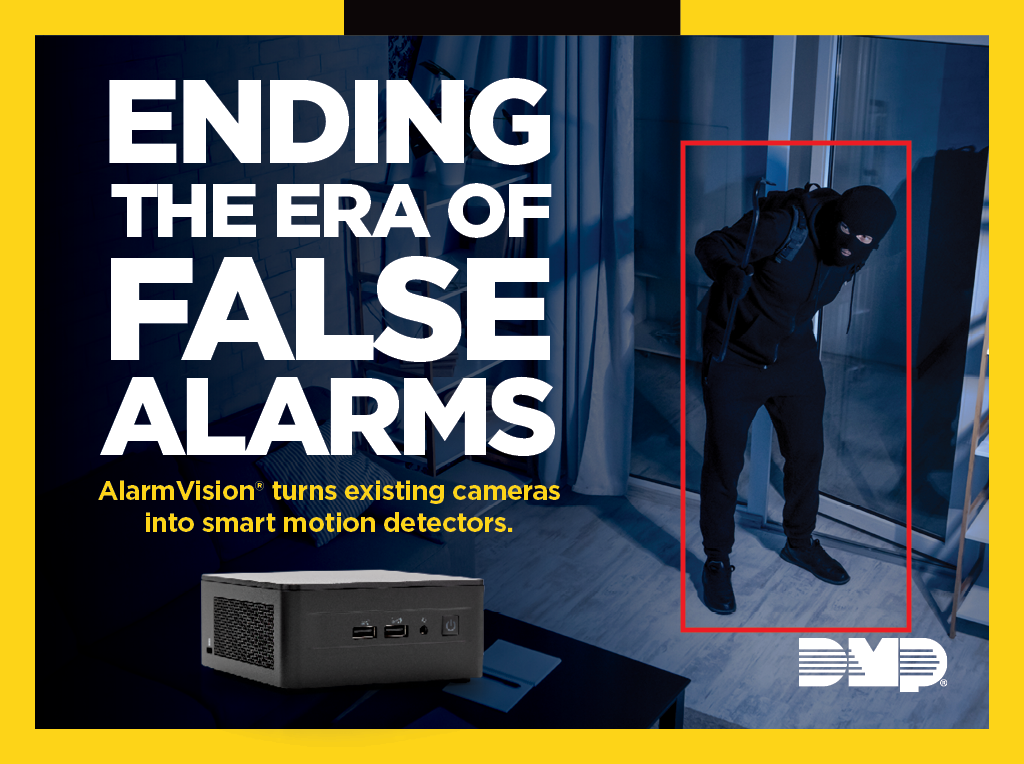Untapped Potential: Drones and Commercial Security

When Unmanned Aerial Vehicles (UAVs), more commonly known as drones, started popping up at security industry trade shows years ago, they were more of a wish list item than a budget line item for security operators outside of military or law enforcement. Today drones are slowly but surely making their way out of their niche, as the commercial security market shifts due to increasingly affordable technological components and changes in the labor force brought on by the pandemic. Drones are no longer just an expensive toy: they’re a revenue opportunity for integrators who understand how drones add value for end users.

Impact of Drones on Security
When asked about the impact drones have had in commercial security applications, Alex Pachikov doesn’t have to think long about his response. “I haven’t seen any impact of drones in security yet,” he observes.
Pachikov is the co-founder and CEO of Sunflower Labs, a manufacturer of autonomous, outdoor security systems that include drones. “There is very little of this technology being used in the real world today,” he continues. “It feels inevitable, yet I can see why we haven’t quite gotten there.” Much like autonomous cars, drones have been difficult for large manufacturers to build because the technology is markedly more complex than what their operations are set up to accommodate. Smaller manufacturers, such as the Switzerland-based Sunflower Labs and Brooklyn, New York’s Easy Aerial, have been finding success in the drone market.
An April 2021 report from IBIS World on UAV manufacturing reports that the non-military market for drones has drastically expanded over the past five years. Government agencies have embraced drones for everything from search and rescue to meteorology, yet until mid-2016, the Federal Aviation Administration (FAA) had regulations so strict that commercial drone operation was difficult. At that point, the FAA passed a series of rules that opened up the US commercial drone market. These rules state that drones must be flown within the operator’s line of sight and that the operator must be certified, among other specifications (see sidebar). Though restrictions are tighter than most other video surveillance applications, security integrators can look to drones for their untapped potential in security.
Who Is the Drone Customer?
Large organizations whose facilities cover several acres are ideal drone customers, since drones are quite literally an “eye in the sky” that improves situational awareness over large areas or remote locations with minimal to no infrastructure. “Customers who use our systems for perimeter security across fence lines that can stretch up to twenty miles,” reports Ido Gur, Co-Founder and CEO of Easy Aerial, which provides autonomous, drone-based monitoring solutions.
“When a breach is detected by a fence alarm or motion sensor, it can take up to twenty minutes for a patrol to reach the location. By then the perimeter will have been breached, or they discover a false alarm. With a drone-based solution, perimeters are continually monitored from a central command center displaying a birds-eye view of the perimeter area. A drone can arrive on the scene within a few minutes of an alarm being triggered to provide immediate situational awareness and threat assessment.”
Drones can also alleviate labor costs – for example, in the instance of a warehouse or storage facility that has a large footprint and limited security staff. “We don’t see drones as a replacement for fixed cameras, rather as an extension of their capabilities to provide coverage where it might have been impractical to install cameras. Adding a drone to your security system can reduce the need for human intervention and patrol,” Pachikov says.
“Drones are providing us ways to see the property that have never been available to us previously,” adds Brad Minsley, a client of Sunflower Labs who is co-founder of 10 Federal Self Storage. “The drones provide a ‘mobile’ camera for tracking trespassers as well as a way to ‘walk’ the property for any other threats. The property managers are controlling these drones from our headquarters in Raleigh, North Carolina while the drone itself may be several states away.”
Adam Messina, a security industry professional with a background in drone sales, points out that “Surveillance drones are the most rapid of rapid-deployment options.” Another benefit is that they “are a relatively low-cost solution for general surveillance, particularly for events that occupy an outdoor space for a limited amount of time. Think fairs, carnivals, et cetera.” He also remembers working with a college that was considering drones that could deploy to a campus location when alerted from a Blue Light Emergency Phone. “I would imagine these use cases will become more common and more cost-effective over time,” he says.

How Drones Add Value
Helping end users understand how drones complement their existing security system is the best route for integrators who want to add drones to their product and service offerings. “Think of drones as upmarket industry segments. Ask yourself if any of your customers have a current security force, or if they have a number of large outdoor properties you can service,” suggests Eric Webb, Director of Sales at Red Sky Security. “A drone is able to help you in areas where cabling and network infrastructure would be absurd, and/or the price point too high.”
“Drones add a versatile layer of security,” agrees Gur. “They can be easily integrated into existing command and control systems, installed and deployed from patrol vehicles, and are fully autonomous, requiring minimal training. Furthermore, they are very economical to operate.”
The quality of patrolling premises and analyzing security events increases through drone use, says Aleksej Tokarev, CEO of Security Robotics Development & Solutions GmbH. “Technology has always been a supporting link between a person and the services provided. Drones never get tired, they are always ready to go, not distracted, and they cope well with monotonous work.” He also points out that the remote control of drones opens up possibilities for employing people with disabilities.
Selecting a Drone Manufacturer
There are quite a few criteria integrators must consider when selecting a drone manufacturer. The drone should have smooth integration capability as an additional layer within an existing multi-layer structure. “This capability is not easy to achieve,” cautions Gur. “The drone manufacturer has to keep this in mind when designing the system architecture. If a comprehensive API / SDK is not defined, it would be very difficult to come up with a modular design.”
Other considerations include working with ISO9001- and AS9100-certified manufacturers to ensure a high level of quality control and making sure that the drone is designed to support multiple missions. “The drone manufacturer has to hear the integrator’s needs and to be able to develop a suitable solution, in terms of mission planning, mission execution and remote control over the system,” adds Gur. “At the end of the day, having an open architecture-oriented and modular system engineering is the key towards a successful match between the integrators’ needs and the drone manufacturer’s offering.”
Equally important is the level of on-site training and after-sales support that a drone manufacturer provide. Because drones are highly mobile and exposed to the elements, they need more maintenance and repair than fixed cameras do. Also keep in mind that the drone manufacturer will typically provide service on the drone. “The drone provider needs to be able to exchange a drone for replacement, because they can’t fix it on site. Your techs aren’t going to be engaging with the drone themselves,” Webb explains. “Treat the drone like you would an elevator – you leave the elevator company to do the elevator work.”

The Future of Drones
As current economic conditions send security dealers and integrators looking for alternate sources of revenue and labor shortages open the door to technological innovation, drones provide an intriguing solution. The onus is on integrators to understand the benefits and limitations of drones and serve as an educator to end users who may not otherwise consider investing in drones.
Gone are the days where drones are just military equipment or expensive consumer electronics. “Drones will integrate more and more into our lives,” predicts Tokarev. “We will soon treat them as we treat smartphones and cars today. They will become a part of our life.”
5 Questions to Ask Your Drone Manufacturer
Finding the right manufacturer is always key to meeting your clients’ goals, and even more so if you’re working with devices that need as much manufacturer support as drones do. Eric Webb, Director of Sales at Red Sky Security, lays out five questions to vet manufacturers.
- What is the rate of failure? Ask for data on how reliable their products are.
- How often does a drone typically need to be serviced? Also find out how quickly they can get a replacement to the customer if (and when) a drone needs to be replaced, to preserve continuity of situational awareness.
- Does the drone generate video that has high enough resolution for image capture? This will let your customer collect forensic data if needed.
- Does the drone meet my customer’s requirements for nighttime scenarios? If deploying the drone at night, a low-light camera is advised since the light source coming from the drone may not provide enough illumination.
- How easy is it to get records to law enforcement, such as where the drone has traveled and when, and its precise spacial coordinates? This will support the customer in the event of litigation or FAA inquiry.
Drone Limitations
Drones, like any security technology, have limitations. Alex Pachikov, founder and CEO of Sunflower Labs, advises integrators to set expectations with their customers so they understand what drones are capable and not capable of.
- FAA restrictions dictate that drones cannot operate in certain airspaces. Visit https://faadronezone.faa.gov for information.
- Certain situations, such as a medivac or Air Force One being in the area, may temporarily change your permissions to fly the drone.
- Many drones are not made to be used indoors or under canopies of trees.
- While drones can typically handle moderate wind and rain, they cannot generally fly in hail or severe weather (think tornadoes, hurricanes, blizzards).
- The docking station for the drone needs to be placed in the location under an open sky and with access to power and internet.




